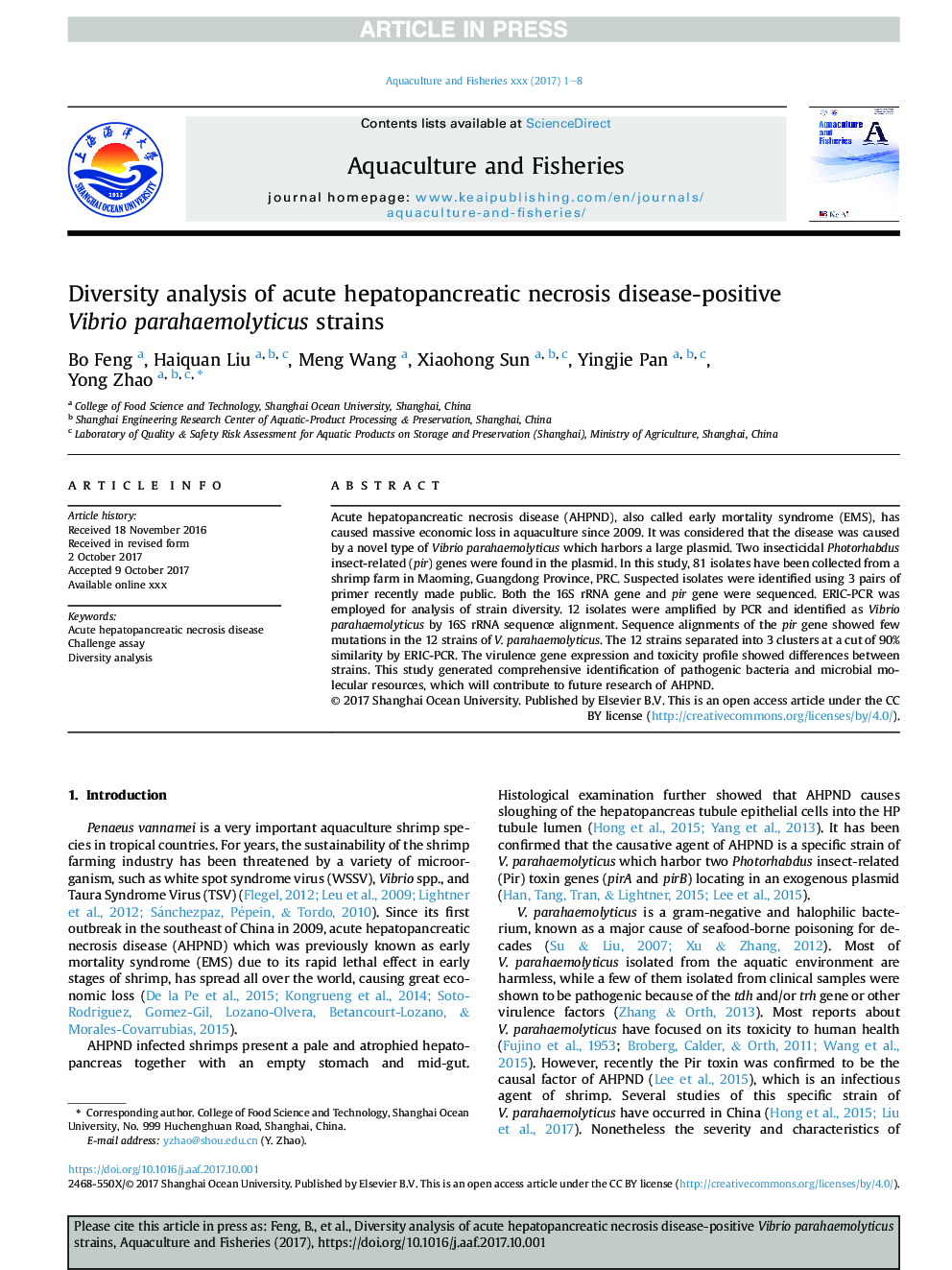| Article ID | Journal | Published Year | Pages | File Type |
|---|---|---|---|---|
| 8919999 | Aquaculture and Fisheries | 2017 | 8 Pages |
Abstract
Acute hepatopancreatic necrosis disease (AHPND), also called early mortality syndrome (EMS), has caused massive economic loss in aquaculture since 2009. It was considered that the disease was caused by a novel type of Vibrio parahaemolyticus which harbors a large plasmid. Two insecticidal Photorhabdus insect-related (pir) genes were found in the plasmid. In this study, 81 isolates have been collected from a shrimp farm in Maoming, Guangdong Province, PRC. Suspected isolates were identified using 3 pairs of primer recently made public. Both the 16S rRNA gene and pir gene were sequenced. ERIC-PCR was employed for analysis of strain diversity. 12 isolates were amplified by PCR and identified as Vibrio parahaemolyticus by 16S rRNA sequence alignment. Sequence alignments of the pir gene showed few mutations in the 12 strains of V. parahaemolyticus. The 12 strains separated into 3 clusters at a cut of 90% similarity by ERIC-PCR. The virulence gene expression and toxicity profile showed differences between strains. This study generated comprehensive identification of pathogenic bacteria and microbial molecular resources, which will contribute to future research of AHPND.
Related Topics
Life Sciences
Agricultural and Biological Sciences
Aquatic Science
Authors
Bo Feng, Haiquan Liu, Meng Wang, Xiaohong Sun, Yingjie Pan, Yong Zhao,
